Seventh chords are littered throughout lots of our music, whether as an extra embellishment or as a strict part of a chord progression. Learning what seventh chords are and how you can create circle of fifths seventh chords. Read a quick recap of seventh chords here, otherwise let’s get into how to build chords with the circle of fifths.
How To build chords With the circle of fifths
You can use the circle of fifths to help you build chords. Major triads and minor triads are a good place to start as all major and minor keys consist of a different selection of major and minor chords. Remember a triad is simply a chord built from three notes stacked on top of each other in thirds.
A major triad consists of just three notes, the tonic, a major third above the tonic and a perfect 5th above the tonic. The major third interval is found by just counting up 4 semitones from the tonic and the fifth you can work out by just traveling clockwise around the circle (remember it is the circle of fifths so each scale clockwise around the circle is a perfect fifth interval). Remember the interval of a perfect fifth is equivalent to seven semitones.
So the major triad in the key of c major would have the notes C E G And you can see this on the circle by making a point on the C, a point on the E and and then a point on the G.
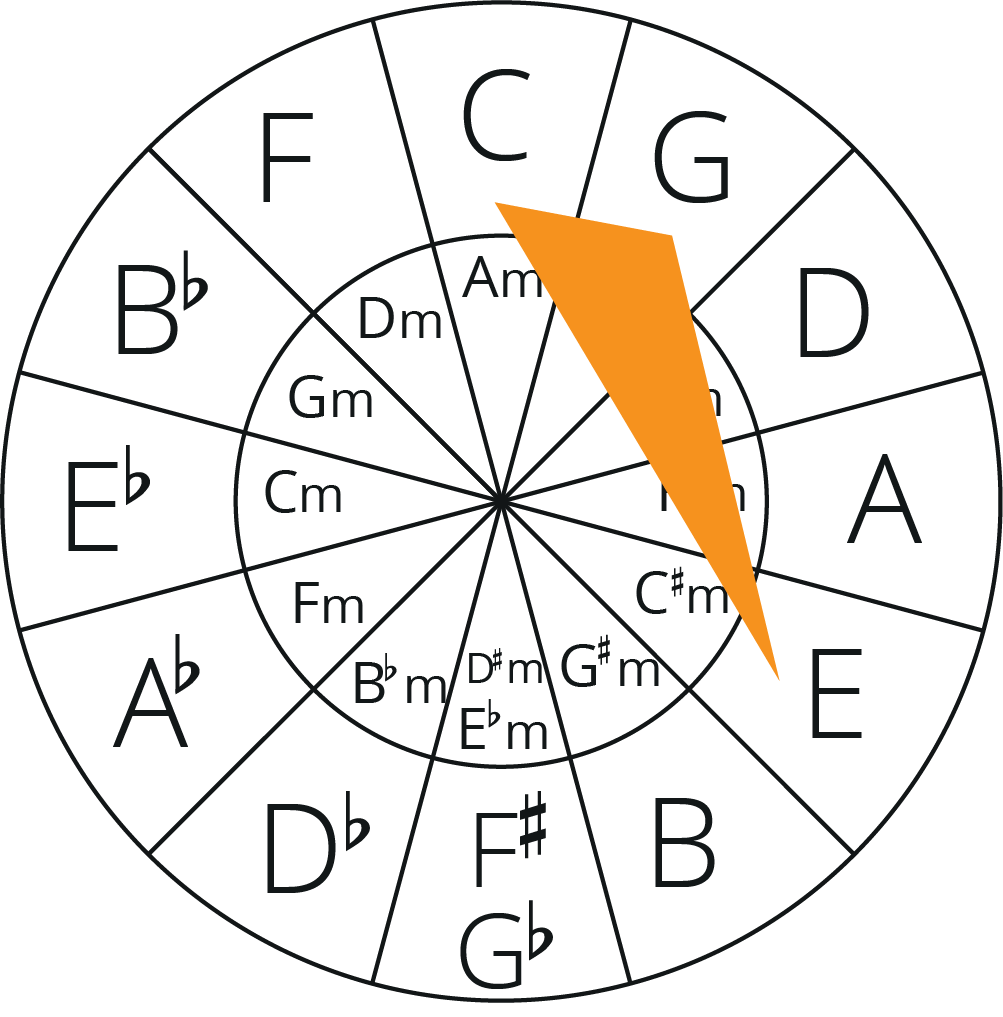
You can then rotate this diagram to find a major chord on any note. Let’s see if we can find the major triad in the key of g major.
Place a point on the G, a point on the B and then a point on the D!
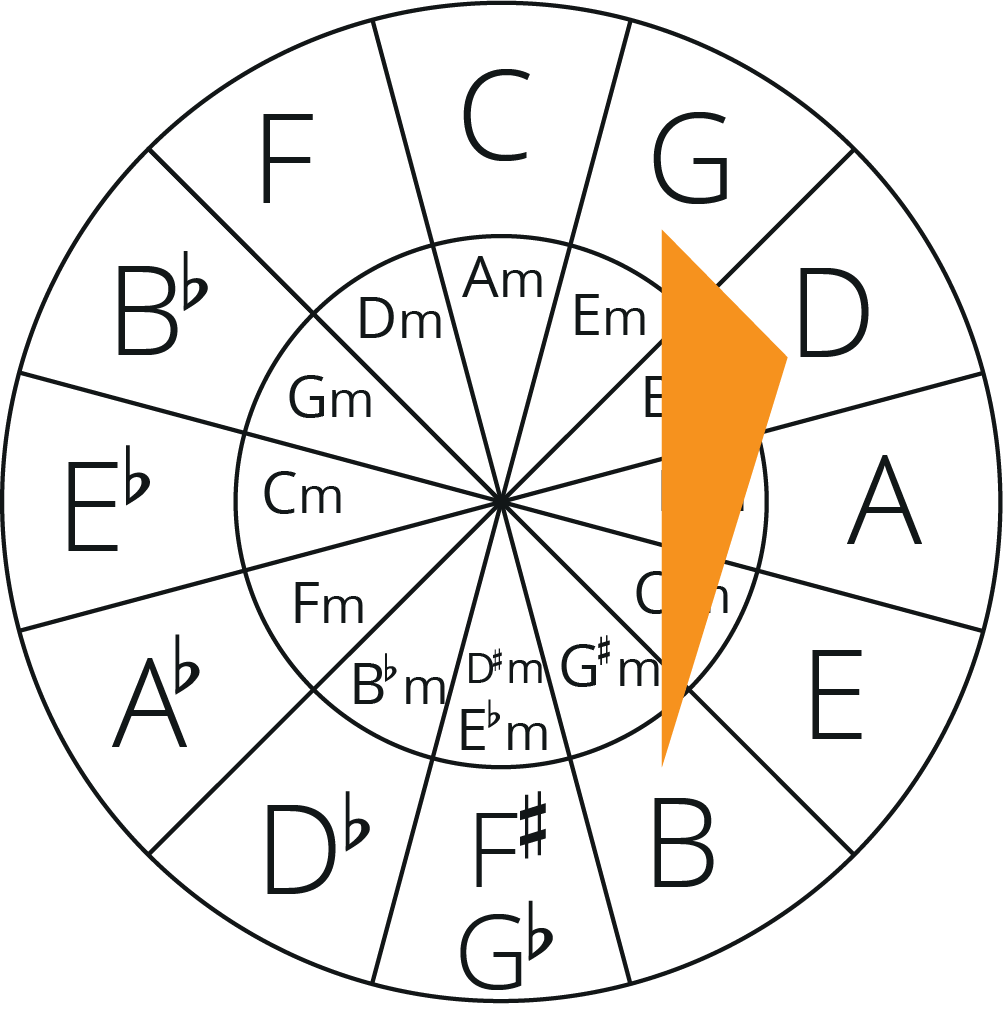
A minor triad is exactly the same as this except you have a minor third instead of a major third within the chord. Let’s see if we can write an a minor chord. Remember each major key has a relative minor key and both of these scales have corresponding key signatures. A minor is relative to C major and so this is a great place to start as it is at the top of the circle.
You start with a point on the A in the middle of the circle (remember we are working out a minor chord!) and then a point on the C (3 semitones up from A and then a point on the E (a perfect 5th above A and so easy to find on the circle of fifths).
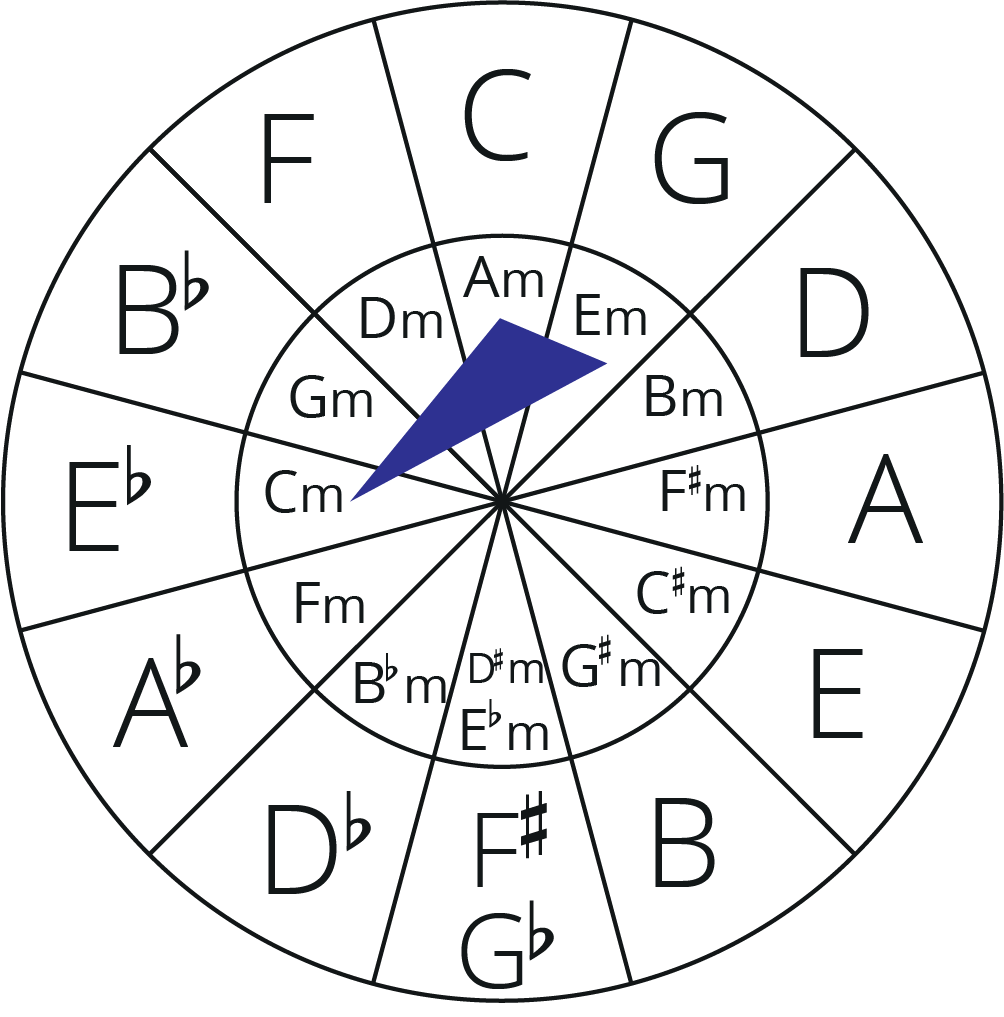
And then as before, you can rotate this diagram to find a minor chord on each note.
Warning! This technique can show minor chords but it can be easier to simply learn your scales to find the chords. If you are using the circle of fifths this way, make sure you check that you have a MINOR 3rd in your chord.
Using the circle of fifths to Find dominant seventh chords
Unsure what seventh chords are, read a quick recap here.
To work out your dominant seventh chords we simply need to extend the method for creating triads. On the circle of fifths you will need to count two steps anti-clockwise (counter clockwise) from the key or tonal centre that you are building the chord from. This is how you add the seventh. Remember the dominant seventh chord is built using a major triad plus a minor seventh stacked on top. So when working this out on your circle of fifths you will have four points.
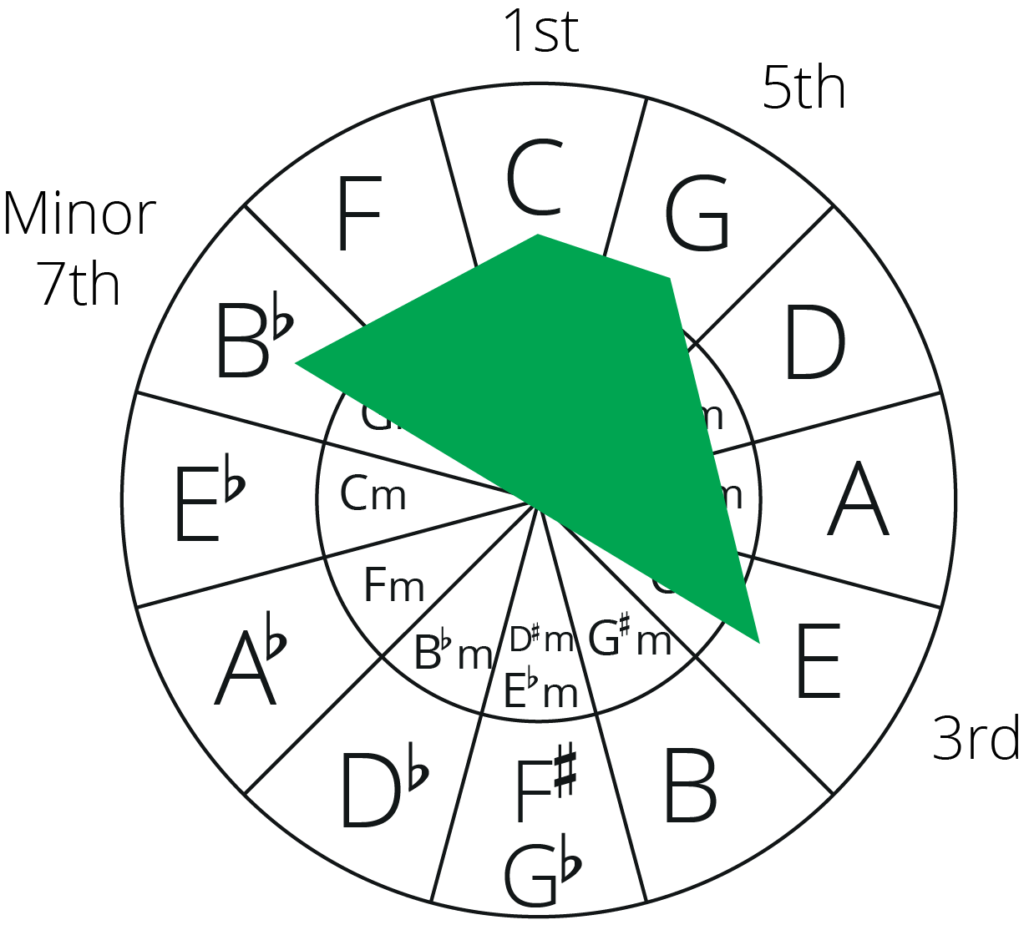
Using the Circle of Fifths to find Major Seventh chords
You can even build a major seventh chord on the circle as well. Remember the only difference between a dominant seventh chord and a major seventh chord is the interval of a seventh! The dominant seventh chord has a minor seventh, whereas the major seventh chord has a major seventh.
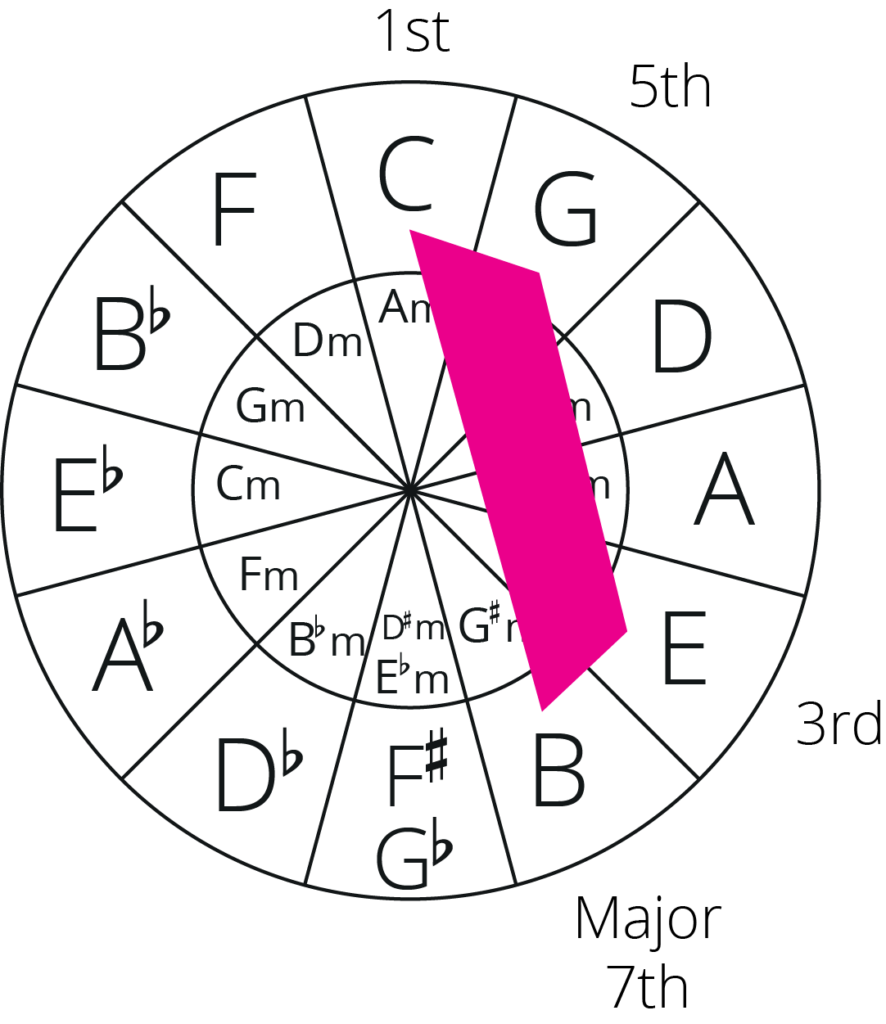
On the circle, the major seventh will look like this and you can simply rotate this around to find a major seventh on each note.
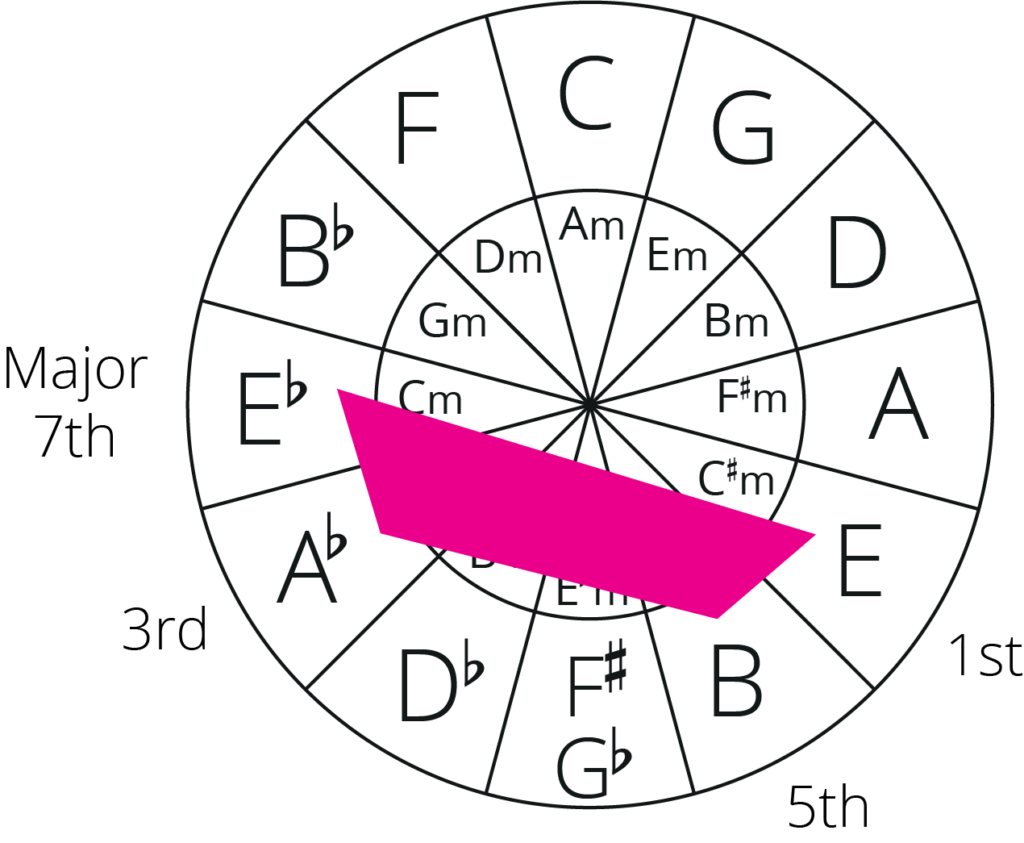
Why use seventh chords at all?
Why should you use seventh chords at all? Seventh chords are a great way of adding extra colour to your chord progressions, but further than this, the use of sevenths can help with voice leading within the chord progressions.
A seventh chord is able to improve a chord progression by creating tension before resolving to the root note. Seventh chords are very often used in this way, to create tension before resolving, and this is why a seventh is very commonly added to the chord made on the fifth degree of the scale. The fifth degree is otherwise known as the dominant.. hence dominant seventh chord!
Voice Leading when using seventh chords
The biggest rule of voice leading when using seventh chords is to ensure that you resolve the seventh down by step. By resolving the seventh note down by step you resolve to the third in the tonic chord of the scale you are in.
Take for example chords V7-I in the c major scale. The notes in V7 of C major are G, B, D, F and the notes in chord I of the c scale are C, E, G.
Looking at these notes you can easily see that the seventh in V7 (F) can resolve to the third degree of the C major chord (E) down by step.
The other notes within the chord can then resolve taking into account the usual rules we follow in harmony, such as which notes to double and avoiding consecutive 5ths.
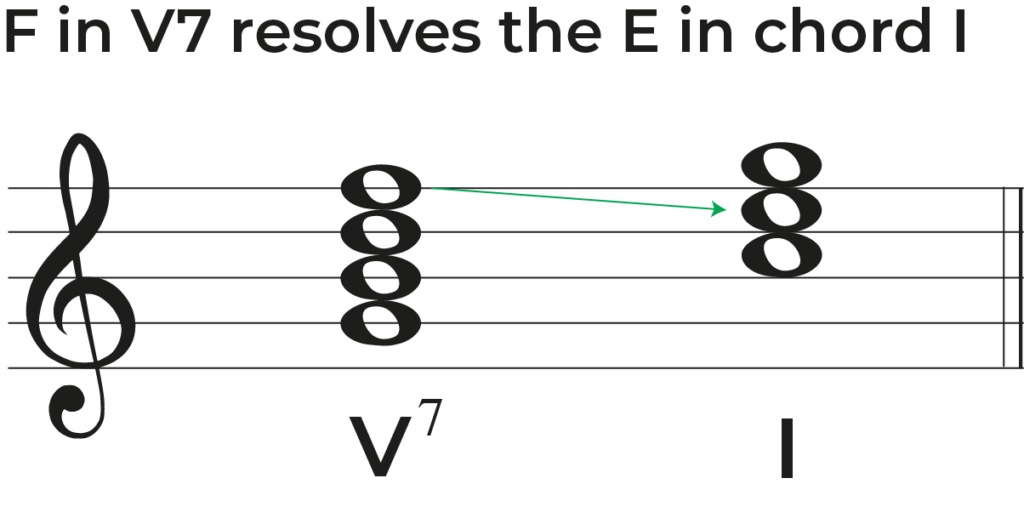
Using the circle of fifths to help you figure out your seventh chords is a very useful technique to learn within music theory! To learn more about the common chords, seventh chords, then make sure to click here. If you are unsure about Roman numerals then I also recommend reading our Roman numerals article here.
FAQs
What are seventh chords?
A seventh chord is simply a triad with the seventh note above the root of that chords scale added to the top.
There are many different types of seventh chord including:
- Minor seventh
- Major seventh
- Dominant seventh chord (major-minor seventh)
- Diminished seventh
- Minor major seventh
- Augmented major seventh
To learn more read our guide to seventh chords.
Perhaps the most used type of seventh chord is the dominant seventh chord.
What is the dominant seventh chord?
The dominant seventh chord is simply a seventh chord based on the 5th note of any given key. For example the dominant seventh chord of C major will begin on the note G because G is the 5th note of C major.

The notes in this seventh chord will then be G B D F.

It is important to note that the seventh in a dominant seventh chord will always be a minor seventh interval (flattened seventh). A major seventh interval would make the F an F# but because we are in the key of C major (remember this is a dominant seventh chord, the 5th note of the scale we are in) C major has an F natural.
